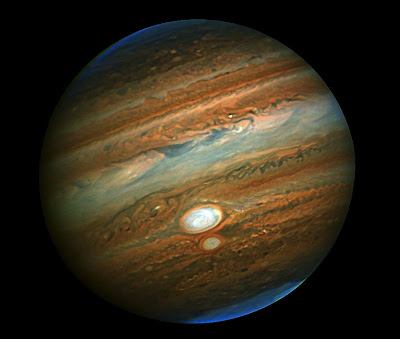

| Visitors Now: | |
| Total Visits: | |
| Total Stories: |

| Story Views | |
| Now: | |
| Last Hour: | |
| Last 24 Hours: | |
| Total: | |
Jupiter’s Core
There has been some controversy regarding the core of Jupiter and it’s heft and composition. All scientists can really do is gather gravitational measurements, compare them with Earth’s, and make the best educated guesses possible based upon those measurements. These measurements cause them to conclude that the core is a thick, super hot soup.
All these ‘best guesses’, however, depend upon the assumption that planets form into contiguously solid spheres (much like they assume for Earth). What if, however, you instead assume that all planets are hollow? How does this change the relative compositions of each of the planets in our solar system? Some sources indicate that the crust of the hollow earth is approximately 800 miles thick. If we take the mass of the earth and cause it to be distributed in this shell, instead of a solid sphere, and also do the same for all planets in our solar system, we can derive a shell thickness for all the bodies in the solar system based upon their gravitational interraction. We do assume, in these calculations, the same average density for all the planetary crusts and neglect the mass of each planet’s inner star or sun. While these may not be entirely valid assumptions, it gets us on the right path.
Here are the results of the calculations:
Sun’s crust = 18,991 miles thick
Mercury’s crust = 301 miles thick
Venus’ crust = 716 miles thick
Earth’s crust = 800 miles thick
Moon’s crust = 120 miles thick
Mars’ crust = 282 miles thick
Jupiter’s crust = 1,709 miles thick
Saturn’s crust = 705 miles thick
Uranus’ crust = 611 miles thick
Neptune’s crust = 774 miles thick
Pluto’s crust = 41 miles thick
I’m just frankly a bit disgusted with the assumption that the so called ‘gas giants’ Jupiter, Saturn, Uranus and Neptune are relegated to becoming nothing more than balls of hot air. I find it far more probable and realistic, in light of the evidence, to see them as planets with solid crusts that are covered with a dense layer of clouds (much the same as Venus).
The Hollow Earth \”Truth is stranger than fiction, but it is because fiction is obliged to stick to possibilities; truth isn\’t.\”
~MARK TWAIN
2012-08-23 14:51:36
Source: http://hollowplanet.blogspot.com/2012/03/jupiters-core.html
Source:



